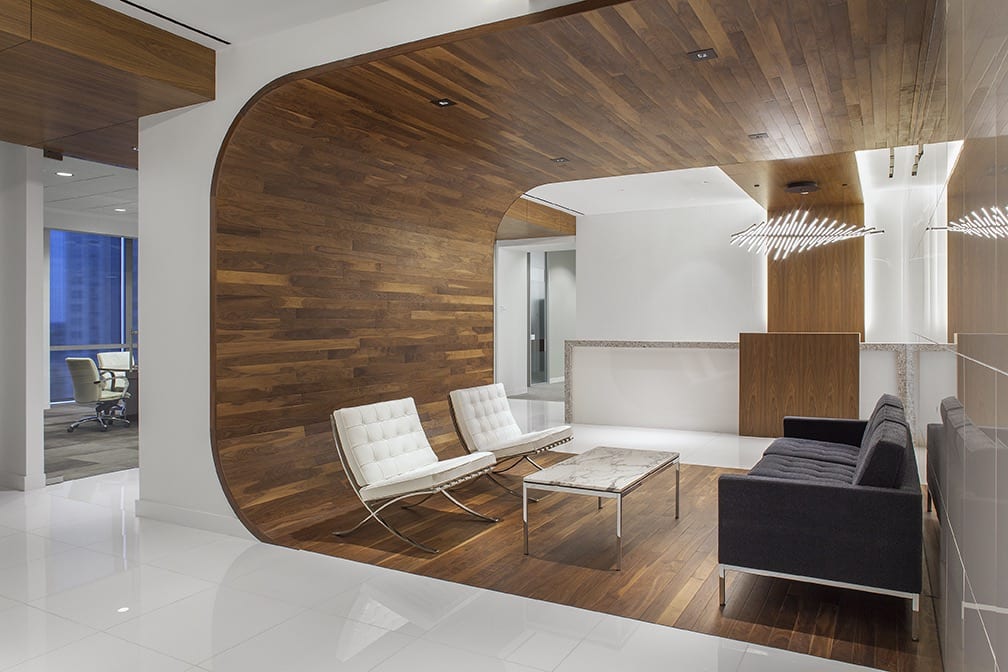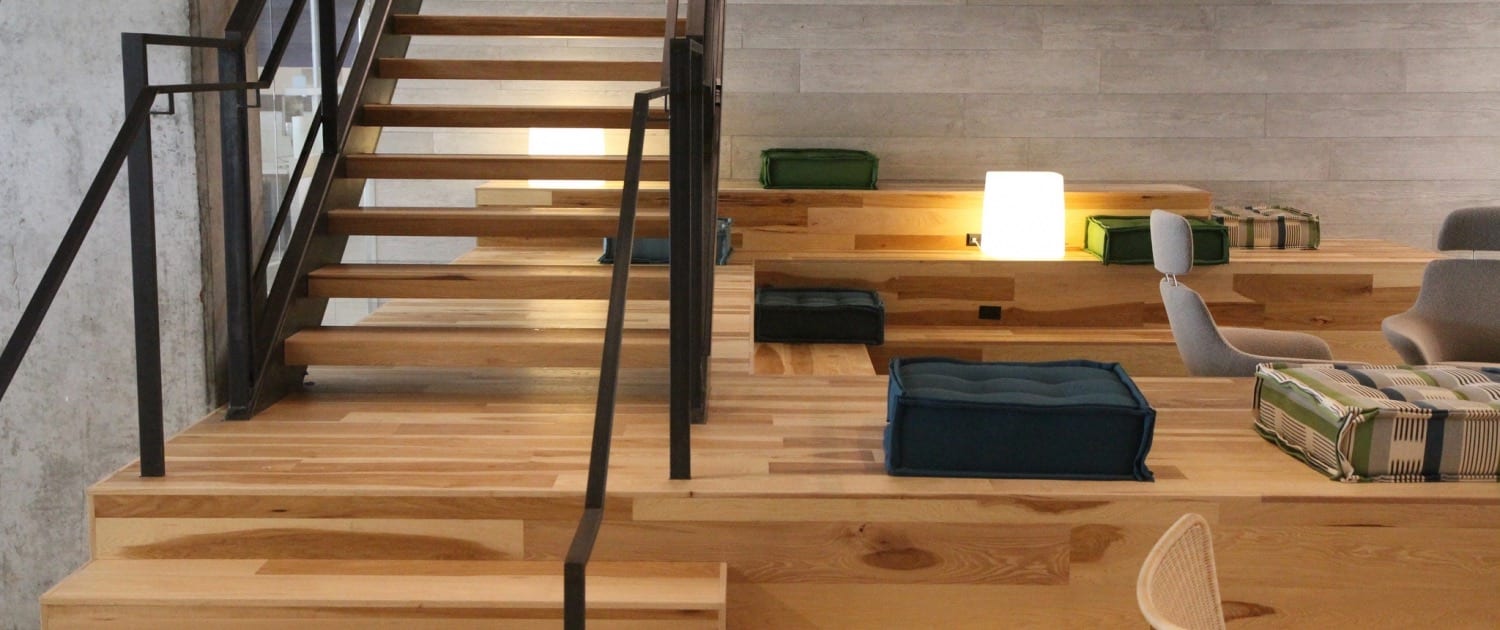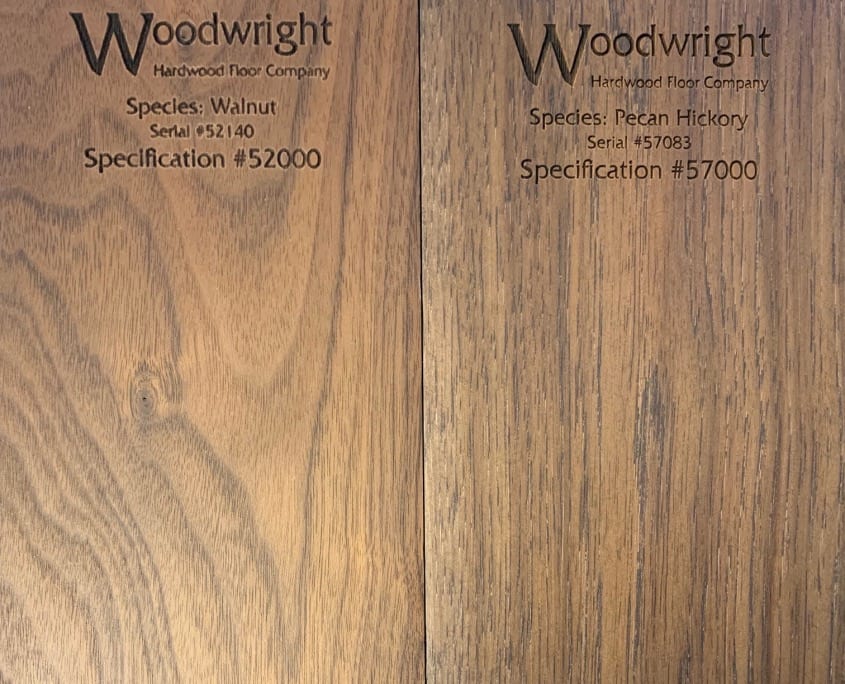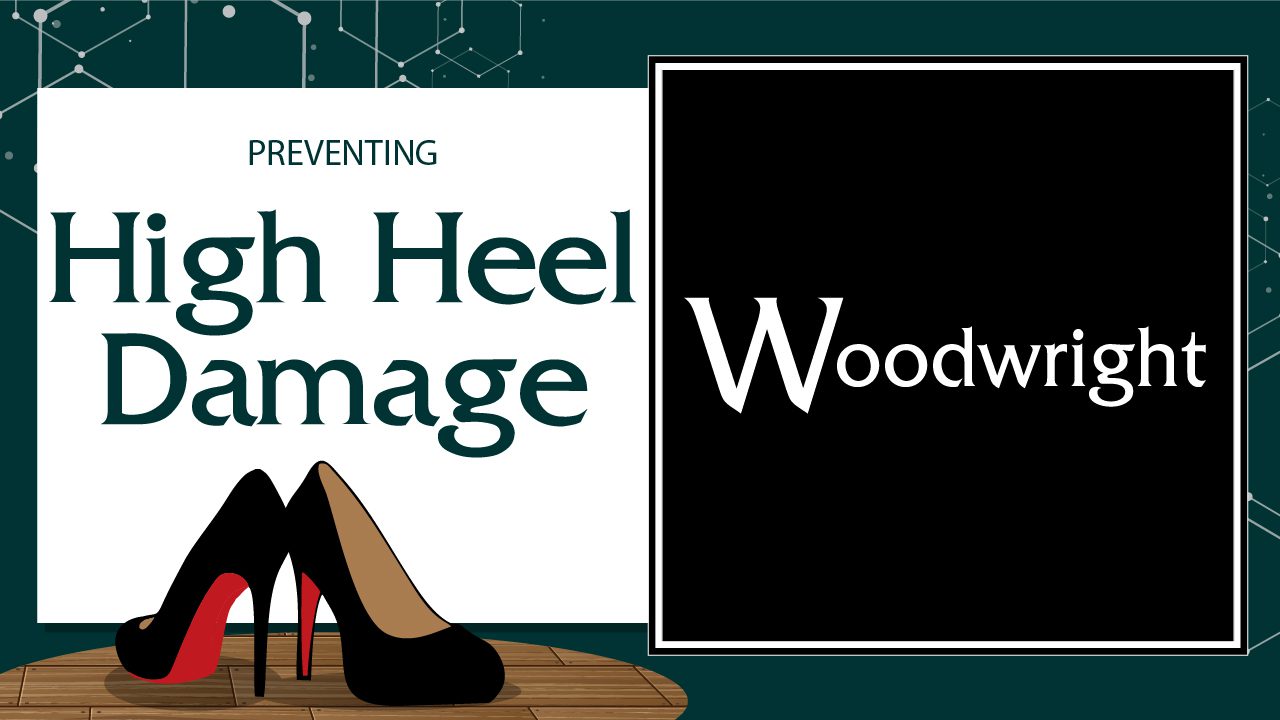At the core of every built environment is a plethora of interior finish selections proudly on display. From the walls, ceilings, and furnishings, all the way down to the flooring each material is carefully selected for its aesthetic and suitability for the project. However, without the proper information some selections, once thought to be ideal for a project, can easily turn out to be the one product that causes unforeseen expenses down the road.
A prime example is proper species selection for hardwood floors, especially in commercial spaces! Whether the wood floor was chosen is a high quality engineered floor or tradition solid wood option, selecting the appropriate species is critical for long term client satisfaction.
Walnut and Pecan are two very popular wood species used for floors, millwork, furniture, etc.. and you can benefit greatly from gathering as much education as possible before specifying one or the other on your project.

Walnut
Walnut is one of the most highly sought-after hardwoods for its luxurious identifiable grain, stunning rich coloration, and time developing patina that adds depth and character over the years. From the beautiful chocolate browns, gold and even purple hues of the heartwood to the creamy light sapwood streaks, Walnut has a richness that causes the eye to dance from plank to plank across a hardwood installation.
Every wood species has what is referred to as a Janka Hardness Rating. Basically, it’s a test to help determine its durability and how it will withstand damage or denting from pressure like that of a woman’s high heel. This rating is an important characteristic to consider when making your choice for a wood floor.
Walnut, with a Janka Hardness result of 1010, is one of the softest woods commonly used for hardwood flooring and therefore does not always hold up well in commercial projects. In addition to its softness, Walnut is rather closed grain and has a soft peaceful texture, which although stunning, creates a naturally more reflective surface that can inadvertently showcase scratches or dents.
When it comes to stability, as decided by the dimensional change coefficient of each species, Walnut stands a bit more favorable than several species and can be considered a solid choice when it comes to reacting to relative humidity and temperature changes.
As gorgeous of a specie that it is, proceed with caution when using Walnut for commercial wood floors.

Pecan/ Hickory
American Hickory and Pecan Hickory are indeed different species of a very diverse group, however, in log form, they are virtually indistinguishable from each other and therefore often processed by sawmills and sold mixed together. Call it by either name, most suppliers do not differentiate.
Pecan has unique characteristics that many designers find very appealing when selecting finishes for wood flooring and millwork applications. It has an inherent wide array of color variation, caused by the natural mix of sapwood and heartwood found throughout most all planks. It is significantly lighter in color than Walnut, yet remarkably has a very similar grain and overall appearance to Walnut with the correct stain color.
On the Janka Hardness scale, Pecan Hickory comes in at an impressive 1820, almost twice as hard as Walnut. This feature coupled with its beneficial open grain, that accepts stain very well, will significantly increase the wearability factor to withstand traffic in commercial projects.
However, when it comes to stability, Pecan does NOT fare well in comparison. Temperature and humidity fluctuations can cause Pecan to expand and contract excessively which can lead to design challenges.
Armed with this knowledge it might be prudent to consider narrower Pecan plank widths and if in doubt always solicit advice from your wood expert on whether solid or engineered would work best for your setting.
So how do I choose?
There are many variables to consider when selecting a hardwood product for your project. Here are a few that are always vital in deciding which species will work best for your project.
- Application and Project Location?
- The application for the material has a lot to do with proper species selection. Is it being used on a wood floor, wall, ceiling or perhaps a set of stairs? Consider the durability requirements and the Janka hardness rating of the wood.
For Example, Walnut on a set of stairs will begin to show wear quickly, due to its hardness. - The projects geographical location is also very important. Volatile climates with drastic humidity fluctuations certainly make the species stability a prominent concern.
For Example, Pecan (rather unstable) specified in Colorado (a very dry climate) should be kept engineered and narrow widths to avoid inevitable shrinkage issues. Or perhaps in a beach resort restaurant, it will swell excessively with the higher humidity.
- The application for the material has a lot to do with proper species selection. Is it being used on a wood floor, wall, ceiling or perhaps a set of stairs? Consider the durability requirements and the Janka hardness rating of the wood.
- Light Exposure?
- Many species are adversely affected by the exposure to UV rays causing ambering, patina or excessive fading. Species like Maple, Walnut, Mesquite and several exotics can change color in a shorter period of time than a stained Oak or Pecan.
- Design Intent… Is specie or color most important?
- Granted the depth and richness of Walnut is difficult to deny or reproduce. Many times, after considering the options, designers just insist on true Walnut to create the desired impact.
- Pecan accepts stain well and with its similar grain pattern can be an excellent substitute to Walnut. Oak has similar characteristics and can also be used in this manner, especially when more uniformity is required.

Beauty and the Beast
Whether it be the inherent beauty of Walnut or the beastly nature of Hickory Pecan we recommend you weigh the pros and cons before making your design choice. As always, your Architect + Design Consultants at Woodwright Hardwood Floor Company are here to make sure that we provide you with the information you need to select a specification that is in your project and client’s best interest.

